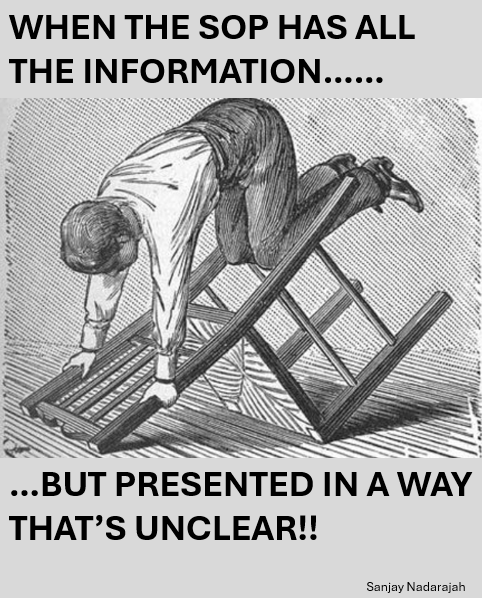Without procedures, we will have no deviations!

Majority of deviations raised result from poorly written procedures
Procedures give us direction, structure and consistency in how we perform our daily tasks in ensuring medicines are manufactured and handled with the utmost care.
They are a requirement to comply with our regulations, where we may hold a manufacturing license or wholesale license, and most importantly, in ensuring that we meet the highest standards expected by our Pharmaceutical clients.
Procedures provide a firm foundation on which our business can grow in a structured and manageable way. They also demonstrate to anyone outside of our business, how we ensure the highest level of Quality in everything that we do in the handling of medicinal products.
The journey of writing procedures starts right at the beginning, when we setup the business, to clearly describe what we do and how we document the activities we perform to ensure we have full traceability of information in the manufacture and handling of medicines in our supply chain.
The procedures, when approved and made effective, will need to be followed on a daily basis to ensure we “practically” handle the medicinal products as described within the procedure. Sometimes unforeseen events will result in us identifying gaps within the procedure. This would be where deviation investigations will identify these gaps and help us to understand how to best navigate such situations by implementing the solution, within the procedure. This allows to further enhance our procedures as the business evolves.
Other causes of deviations are where the procedure has been written by someone that is not very familiar with the process or have not qualified that process by checking it through with subject matter experts that routinely perform that task. This tends to result in procedures with insufficient detail or excessive detail that it causes confusion amongst those that will routinely follow that procedure.
Procedures must be written collectively with subject matter experts wherever possible, and to have process flows and photos or diagrams to help with understanding what must be done at each step of the process. Pictures or visual diagrams (process flows) can replace many words and can be easily understood by many, whereas words can be interpreted differently from person to person.
Written by Sanjay Nadarajah
